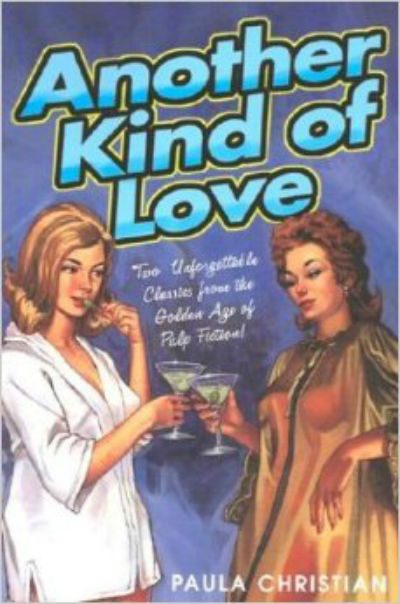A pulp for the modern woman.
The back cover of ‘Another Kind of Love’ states:
Unlike in most pulp romances of the 1950s and 60s, Paula Christian’s heroines were throughly modern women – struggling to define themselves while searching for their own lasting relationships. Fully human and honest, afraid of failure yet always hopeful, these sisters were blazing a trail, encouraging others on their path to another kind of love.
This description accurately describes the journey of the story’s main character Laura, a writer on a showbiz magazine, who discovers she is attracted to other women after meeting Ginny, an aspiring actress. Heartbroken after Ginny’s rejection of her, Laura escapes to New York, where she is introduced to the twilight world of The Village. This environment allows her to explore herself and her feelings for women.
Unlike other pulps, Another Kind of Love doesn’t offer a prescribed reason or back story for Laura’s lesbianism. The reader sees her acceptance of her situation in her conversations with Madeline, the woman who introduces her to the bar scene when Laura moves to New York. They discuss the idea that whilst they find men physically attractive and being sexually involved with men is not repulsive, it is the emotional connection that they desire and which they can only find with women. as shown in this excerpt from the novel:
“Besides,” Madeline went on, “I might as well accept it. Smarter brains than mine don’t have any answers to offer. Some of my fondest memories are from the analyst’s couch – also the most expensive.”
“Do you like men? Sexually, I mean?”
She looked at Laura thoughtfully, and Laura watched her as she would a friendly Martian.
“Sexually? Yes, I like men – it, or they, satisfy my animal feelings, my libido. Or perhaps I enjoy punishing myself, or men, by using them. It’s emotionally that we don’t dig each other.”
This is a definite step away from outdated psychological ideas about women being attracted to the same sex because of neuroses about sexual relationships with men. This novel also offers a move away from the traditional role of women. Laura is an unmarried woman with a successful career which allows her the option of moving to New York. She enjoys sex, both with men and women and whilst distressed when describing herself as ‘queer’, she learns quickly how to adapt and to find happiness in her life. Her companion in New York, Madeline, is divorced and is subject to ‘rumours’ about her sexuality, but seems unfazed by them. Christian depicts these women as accepting of society’s view on their lives, but they refused to be depressed by them.
This novel is one hundred and forty seven pages long, so a lot of content is packed into it’s small size. The intensity with which Laura falls in love with Ginny does seem somewhat unlikely and the reader may question the believability of Laura’s feelings. However, the dramatic nature of the pulp genre allows for this and Laura’s escape leads her, and therefore the reader, to the wonderful world of the New York lesbian bar scene.
